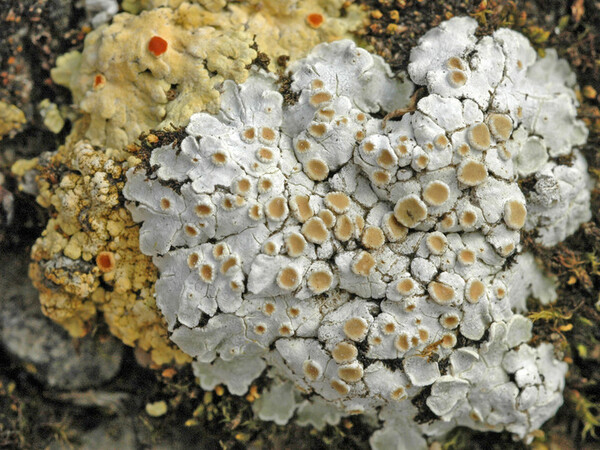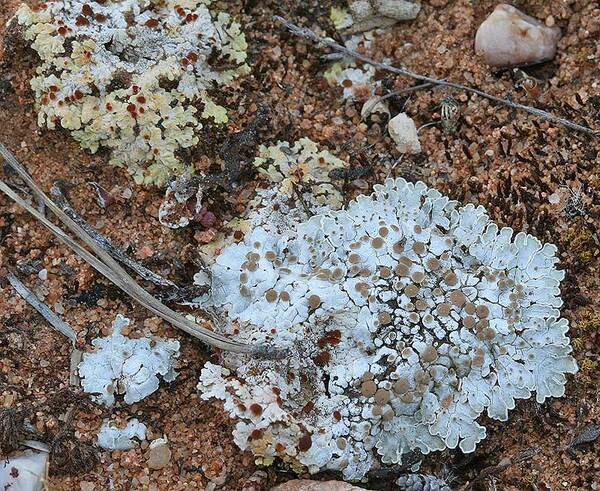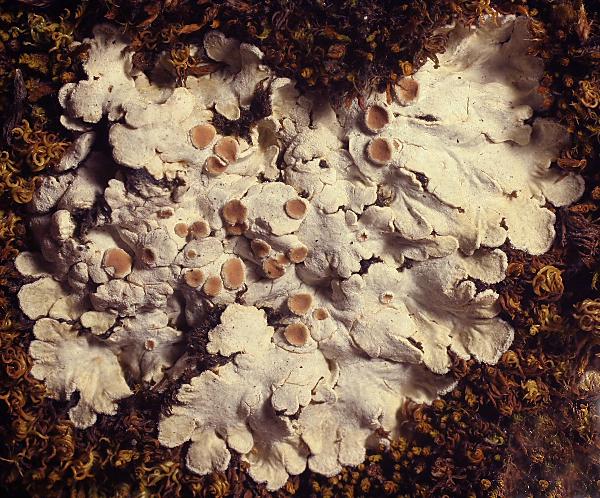Squamarina lentigera (Weber) Poelt
Mitt. bot. Staatss. München, 2: 536, 1958. Basionym: Lichen lentigerus Weber - Spicil. Fl. Goett.: 192, 1778.
Synonyms: Lecanora crassa var. lentigera (Weber) St.-Amans; Lecanora lentigera (Weber) Ach.; Placodium lentigerum (Weber) Gray; Psoroma lentigerum (Weber) A. Massal.; Squamaria lentigera (Weber) DC.
Distribution: N - VG, Frl (Tretiach 1996), Ven, TAA, Lomb, Piem (Gheza 2020), VA (Piervittori & Isocrono 1999), Emil (Nimis & al. 1996, Fariselli & al. 2020), Lig. C - Tosc (Loppi & al. 1998, 2004b), Marc, Umb (Ravera & al. 2006), Laz (Di Pietro & al. 2022), Abr (Nimis & Tretiach 1999, Brackel 2015, Gheza & al. 2021), Mol (Brackel 2020), Sar (Brackel & Berger 2019). S - Camp (Aprile & al. 2003b, Garofalo & al. 2010), Pugl, Bas (Bartoli & Puntillo 1998, Nimis & Tretiach 1999, Potenza 2006, Potenza & al. 2010, Brackel 2011), Cal (Puntillo 1996), Si (Nimis & al. 1994, Ottonello & al. 1994, Grillo 1998, Grillo & Caniglia 2004, Cataldo & Minissale 2015, Campisi & al. 2020).
Description: Thallus squamulose to subcrustose-placodioid, white-pruinose to (partially) brownish green, thick, closely adpressed, forming up to 8 cm wide, orbicular rosettes. Marginal squamules clearly elongate, flattened, 1-4 mm broad, to 5 mm long, 1-2 mm thick, contiguous, often with a slightly up-turned margin; central squamules more or less isodiametrical (0.5-2 mm), subcrustose, contiguous, flat, not overlapping. Lower surface white to pale brown also in central parts. Upper cortex paraplectenchymatous, c. 50 μm thick, well delimited against the thick, white medulla. Apothecia frequent, rounded, lecanorine/zeorine, at first immersed then sessile, sometimes finally strongly constricted at base, up to 4 mm across, with a pale to reddish brown, smooth, flat to finally convex disc and a smooth, thick thalline margin which often disappears in old apothecia. Epithecium brownish, granular, 10-30 μm high, with crystals sometimes penetrating into the hymenium; hymenium colourless, c. 120 μm high, hemiamyloid; paraphyses slightly thickened in upper part; hypothecium colourless. Asci 8-spored, elongate-clavate, with a thin, outer amyloid layer and a thickened, amyloid tholus devoid of an ocular chamber, penetrated by an axial tube the sides of which stain I+ deeper blue, approaching the Porpidia-type. Ascospores 1-celled, hyaline, ellipsoid, thin-walled, (9-)10-13(-14) x (3-)4-5 μm. Pycnidia dark, immersed. Conidia filiform, curved. Photobiont chlorococcoid. Spot tests: cortex and medulla K-, C-, KC- (or cortex KC+ yellowish), P-, UV-. Chemistry: cortex with usnic and isousnic acids. Note: a species of dry-continental areas, only locally common, especially on gypsaceous or clayey soil in dry grasslands, also present in dry-warm Alpine valleys. In the subalpine and alpine belts of the Alps it is substituted by the very similar S. nivalis.
Growth form: Crustose placodiomorph
Substrata: soil, terricolous mosses, and plant debris
Photobiont: green algae other than Trentepohlia
Reproductive strategy: mainly sexual
Subcontinental: restricted to areas with a dry-subcontinental climate (e.g. dry Alpine valleys, parts of Mediterranean Italy)
Commonnes-rarity: (info)
Alpine belt: absent
Subalpine belt: absent
Oromediterranean belt: absent
Montane belt: extremely rare
Submediterranean belt: very rare
Padanian area: absent
Humid submediterranean belt: very rare
Humid mediterranean belt: rare
Dry mediterranean belt: rather rare

Predictive model
Herbarium samples
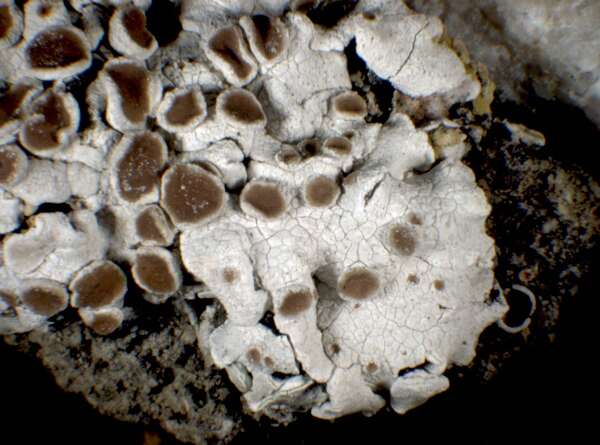

P.L. Nimis; Owner: Department of Life Sciences, University of Trieste
Herbarium: TSB (21098)
2001/12/11
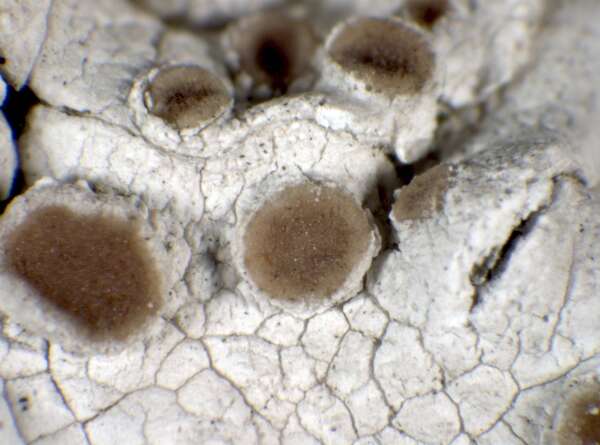

P.L. Nimis; Owner: Department of Life Sciences, University of Trieste
Herbarium: TSB (21098)
2001/12/11
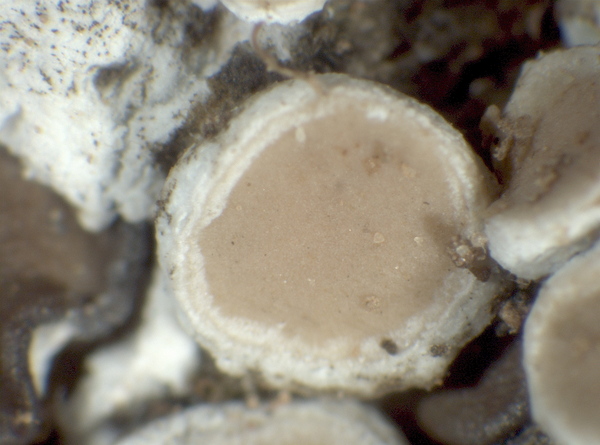

P.L.Nimis; Owner: Department of Life Sciences, University of Trieste
Herbarium: TSB (38423)
2008.02.25


Felix Schumm – CC BY-SA 4.0
Image from: F. Schumm (2008) - Flechten Madeiras, der Kanaren und Azoren. Beck, OHG - ISBN: 978-3-00-023700-3
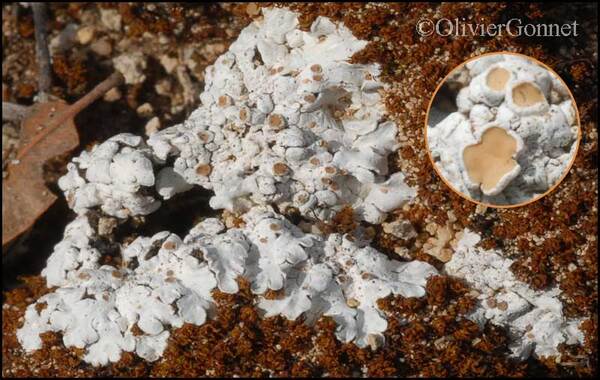
Courtesy Danièle et Olivier Gonnet - Source: https://www.afl-lichenologie.fr/Photos_AFL/Photos_AFL_S/Squamarina_lentigera.htm
France, au sol parmi les mousses - session AFL 2008 - Lozère

Courtesy Danièle et Olivier Gonnet - Source: https://www.afl-lichenologie.fr/Photos_AFL/Photos_AFL_S/Squamarina_lentigera.htm
France, au sol parmi les mousses - session AFL 2008 - Lozère

Courtesy Danièle et Olivier Gonnet - Source: https://www.afl-lichenologie.fr/Photos_AFL/Photos_AFL_S/Squamarina_lentigera.htm
France, au sol parmi les mousses - session AFL 2008 - Lozère
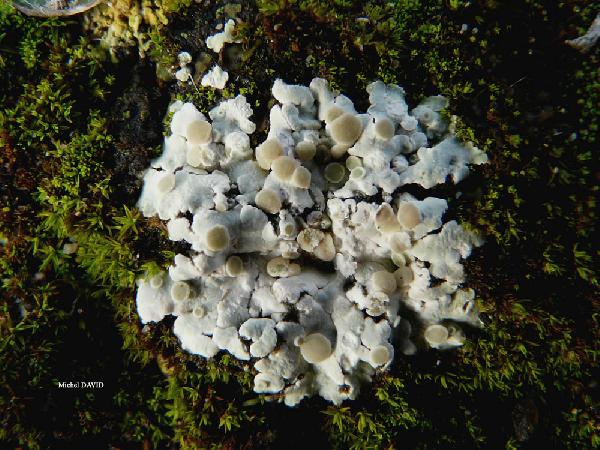
Michel David - Source: http://www.lichensmaritimes.org/index.php?task=fiche&lichen=177&lang=en
Belgium, La Palue
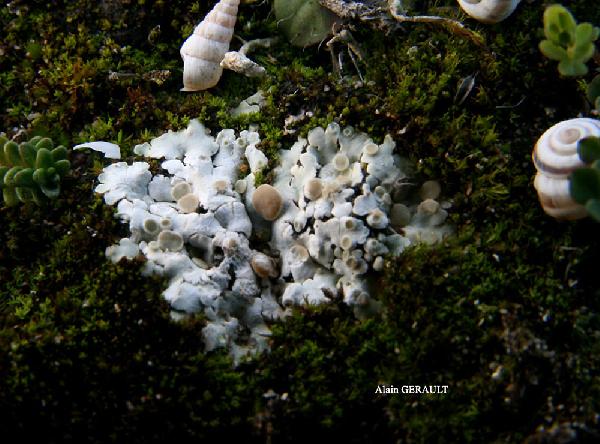
Michel David - Source: http://www.lichensmaritimes.org/index.php?task=fiche&lichen=177&lang=en
Belgium, La Palue
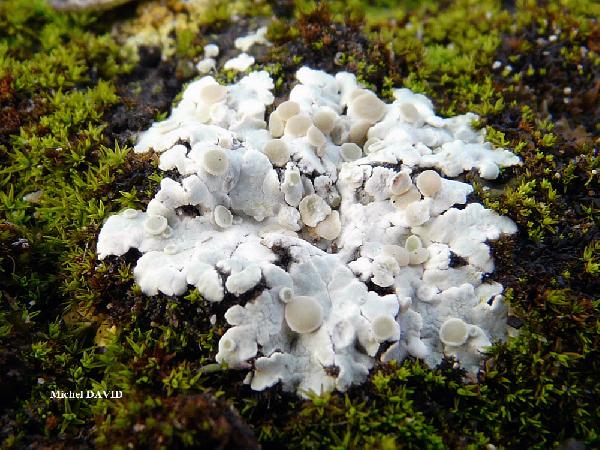
Michel David - Source: http://www.lichensmaritimes.org/index.php?task=fiche&lichen=177&lang=en
Belgium, La Palue

Michel David - Source: http://www.lichensmaritimes.org/index.php?task=fiche&lichen=177&lang=en
Belgium, La Palue
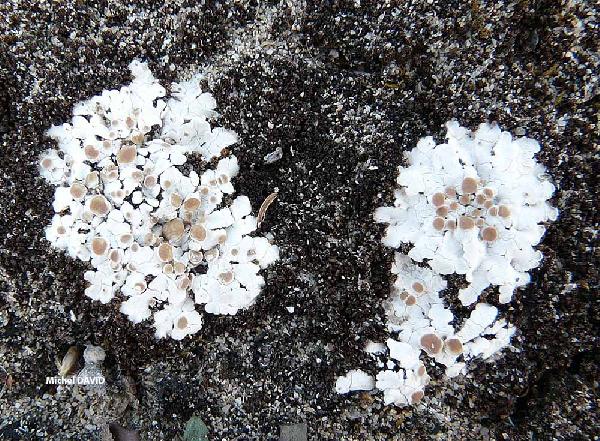
Michel David - Source: http://www.lichensmaritimes.org/index.php?task=fiche&lichen=177&lang=en
Belgium, La Palue
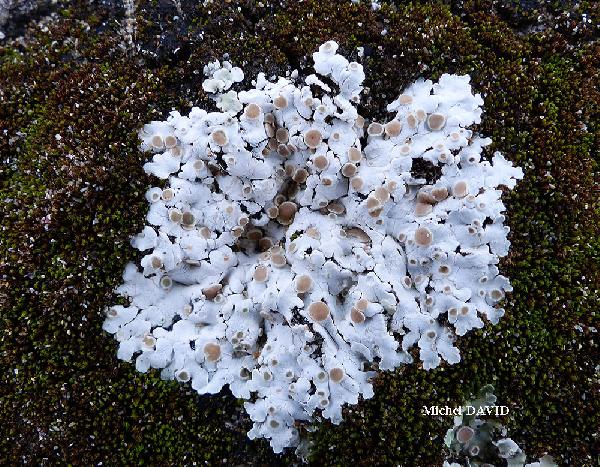
Michel David - Source: http://www.lichensmaritimes.org/index.php?task=fiche&lichen=177&lang=en
Belgium, La Palue
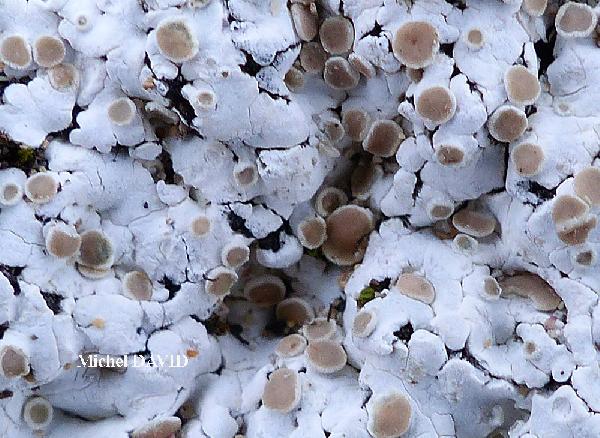
Michel David - Source: http://www.lichensmaritimes.org/index.php?task=fiche&lichen=177&lang=en
Belgium, La Palue
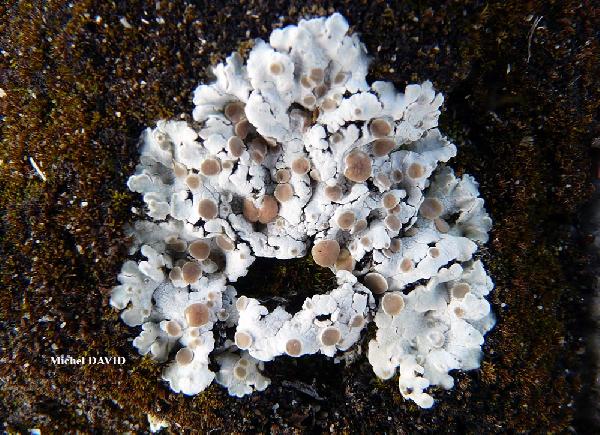
Michel David - Source: http://www.lichensmaritimes.org/index.php?task=fiche&lichen=177&lang=en
Belgium, La Palue
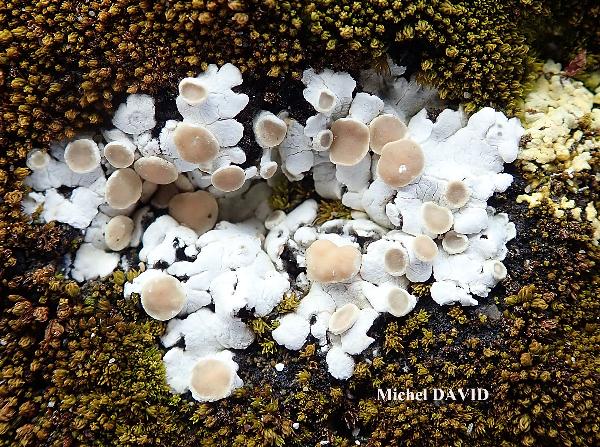
Alain Gerault - Source: http://www.lichensmaritimes.org/index.php?task=fiche&lichen=177&lang=en
Belgium, La Palue

Alain Gerault - Source: http://www.lichensmaritimes.org/index.php?task=fiche&lichen=177&lang=en
Belgium, La Palue
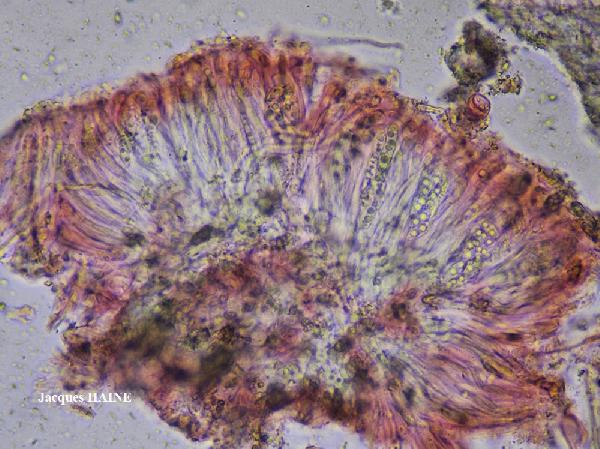
Jacques Haine - Source: http://www.lichensmaritimes.org/index.php?task=fiche&lichen=177&lang=en
Belgium, La Palue
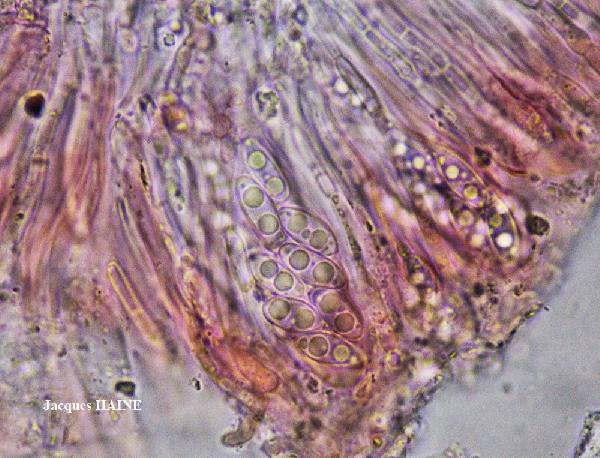
Jacques Haine - Source: http://www.lichensmaritimes.org/index.php?task=fiche&lichen=177&lang=en
Belgium, La Palue

Jacques Haine - Source: http://www.lichensmaritimes.org/index.php?task=fiche&lichen=177&lang=en
Belgium, La Palue

Jacques Haine - Source: http://www.lichensmaritimes.org/index.php?task=fiche&lichen=177&lang=en
Belgium, La Palue
Growth form: Crustose placodiomorph
Substrata: soil, terricolous mosses, and plant debris
Photobiont: green algae other than Trentepohlia
Reproductive strategy: mainly sexual
Subcontinental: restricted to areas with a dry-subcontinental climate (e.g. dry Alpine valleys, parts of Mediterranean Italy)
Commonnes-rarity: (info)
Alpine belt: absent
Subalpine belt: absent
Oromediterranean belt: absent
Montane belt: extremely rare
Submediterranean belt: very rare
Padanian area: absent
Humid submediterranean belt: very rare
Humid mediterranean belt: rare
Dry mediterranean belt: rather rare

Predictive model
| Herbarium samples |


P.L. Nimis; Owner: Department of Life Sciences, University of Trieste
Herbarium: TSB (21098)
2001/12/11


P.L. Nimis; Owner: Department of Life Sciences, University of Trieste
Herbarium: TSB (21098)
2001/12/11


P.L.Nimis; Owner: Department of Life Sciences, University of Trieste
Herbarium: TSB (38423)
2008.02.25


Felix Schumm – CC BY-SA 4.0
Image from: F. Schumm (2008) - Flechten Madeiras, der Kanaren und Azoren. Beck, OHG - ISBN: 978-3-00-023700-3

Courtesy Danièle et Olivier Gonnet - Source: https://www.afl-lichenologie.fr/Photos_AFL/Photos_AFL_S/Squamarina_lentigera.htm
France, au sol parmi les mousses - session AFL 2008 - Lozère

Courtesy Danièle et Olivier Gonnet - Source: https://www.afl-lichenologie.fr/Photos_AFL/Photos_AFL_S/Squamarina_lentigera.htm
France, au sol parmi les mousses - session AFL 2008 - Lozère

Courtesy Danièle et Olivier Gonnet - Source: https://www.afl-lichenologie.fr/Photos_AFL/Photos_AFL_S/Squamarina_lentigera.htm
France, au sol parmi les mousses - session AFL 2008 - Lozère

Michel David - Source: http://www.lichensmaritimes.org/index.php?task=fiche&lichen=177&lang=en
Belgium, La Palue

Michel David - Source: http://www.lichensmaritimes.org/index.php?task=fiche&lichen=177&lang=en
Belgium, La Palue

Michel David - Source: http://www.lichensmaritimes.org/index.php?task=fiche&lichen=177&lang=en
Belgium, La Palue

Michel David - Source: http://www.lichensmaritimes.org/index.php?task=fiche&lichen=177&lang=en
Belgium, La Palue

Michel David - Source: http://www.lichensmaritimes.org/index.php?task=fiche&lichen=177&lang=en
Belgium, La Palue

Michel David - Source: http://www.lichensmaritimes.org/index.php?task=fiche&lichen=177&lang=en
Belgium, La Palue

Michel David - Source: http://www.lichensmaritimes.org/index.php?task=fiche&lichen=177&lang=en
Belgium, La Palue

Michel David - Source: http://www.lichensmaritimes.org/index.php?task=fiche&lichen=177&lang=en
Belgium, La Palue

Alain Gerault - Source: http://www.lichensmaritimes.org/index.php?task=fiche&lichen=177&lang=en
Belgium, La Palue

Alain Gerault - Source: http://www.lichensmaritimes.org/index.php?task=fiche&lichen=177&lang=en
Belgium, La Palue

Jacques Haine - Source: http://www.lichensmaritimes.org/index.php?task=fiche&lichen=177&lang=en
Belgium, La Palue

Jacques Haine - Source: http://www.lichensmaritimes.org/index.php?task=fiche&lichen=177&lang=en
Belgium, La Palue

Jacques Haine - Source: http://www.lichensmaritimes.org/index.php?task=fiche&lichen=177&lang=en
Belgium, La Palue

 INDEX FUNGORUM
INDEX FUNGORUM
 GBIF
GBIF
 DOLICHENS
DOLICHENS
